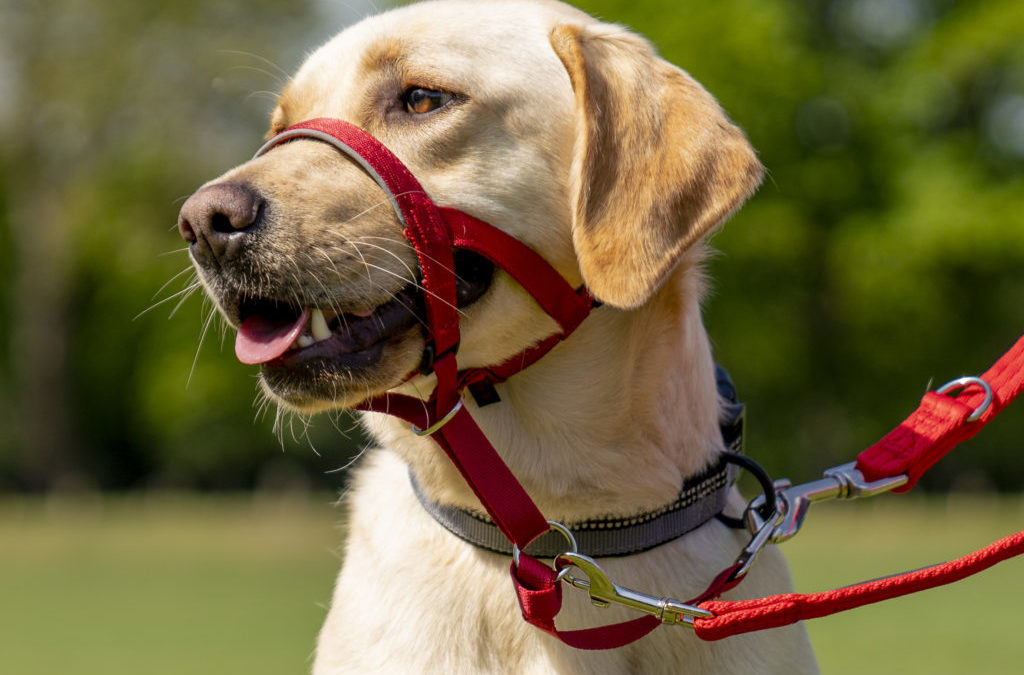 *
*
The worst reason to use Haltis in dog training is to teach your dog the “heel” command.
Haltis and Gentle Leaders are not magical training collars that teach your dog to walk with a loose leash. Instead, the intent behind these tools is to reduce your dog’s pulling power by putting pressure on the dog’s muzzle, making it cumbersome to them. Wherever the dog’s head goes, their body will follow, making pulling challenging for the dog. Having this control empowers people to feel they can finally manage their dog on a walk. Some dogs find the pressure on their muzzle aversive enough to minimize pulling on the leash. But most seasoned pullers will keep on resisting the tool instead of conforming to its intended use. Dogs taught a Halti to correct pulling will revert the moment the Halti is off. That’s if the pulling even subsided when it was on! That method is not reliable obedience. Instead, you depend on a training tool for your results.
Here are the top 3 reasons we use Haltis at The Doghouse:
1. The client has limited dexterity and strength with their hands.
Using the Halti can help give the client confidence when handling a bigger dog. Walking your dog should never be a strength competition, but using a Halti takes the fight out who controls the walk’s pace and direction. Think of it as using cruise control when you are driving your car. You still are responsible for being diligent in handling your vehicle.
2. A Halti helps suppress dominant dogs that don’t respond to other training collar corrections.
If you couldn’t read past the word suppress, let me help you. Managing an unhealthy state of mind is beneficial to be able to replace it with something constructive. If your dog is consistently hunting squirrels to the point that you can’t walk them, then using a Halti will help suppress their hunt drive to focus on the walk. It also works with a dog fearful of bikes, skateboards, and rollerbladers. Suppose all they could do before the Halti equipment was obsess over the next passerby. In that case, I would instead channel that state of mind toward the training tool.
3. Using a Halti as a secondary cue for a service dog is also a great training advantage.
Service dogs wear a vest to help signal to them that they are under “work mode.” Pairing that with a Halti helps reinforce that state of mind. Halti’s are also more socially accepted for service dogs rather than prong collars. These tools help bridge the gap until the service dog is mature and seasoned in their job.
Those are beneficial purposes for why we use a Halti in our training at The Doghouse. Again, we do not use a Halti to teach the formal “heel” command. When preparing a dog to heel on a loose leash, you do not want constant pressure on the tool. To properly train a heel position, you must reward a dog for following you and correct a dog when trying to be ahead. Once the dog can reliably heel past distractions and in many environments with no pressure on the leash, then you can overlay a Halti into their training.
If you question your dog’s foundation, we are here to help guide you through what is best for your dog and the goals you have with their training. Contact us here


